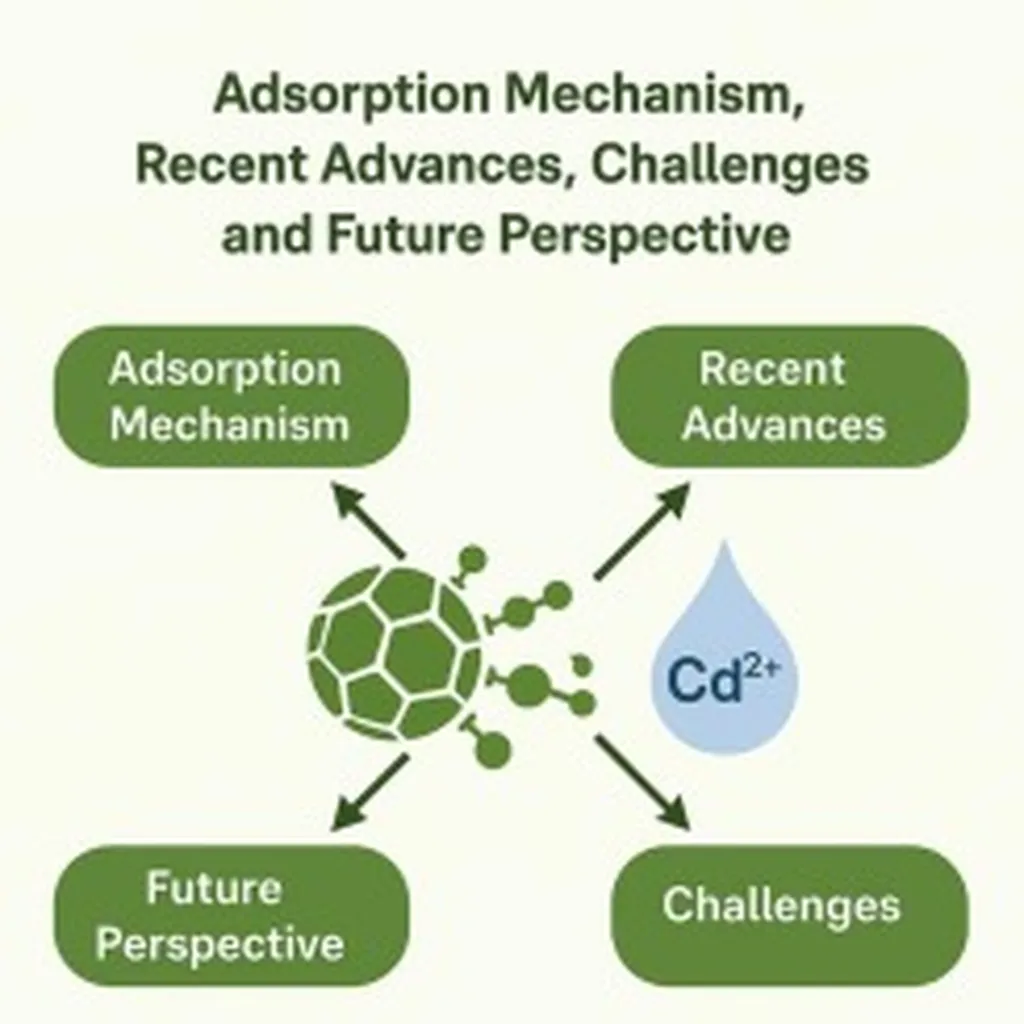In the heart of Chhattisgarh, India, a team of researchers led by Sangeeta Patil from the Department of Chemistry at Rungta College of Engineering and Technology is tackling a persistent environmental challenge: cadmium contamination. Their work, published in the journal *Next Materials*, explores the potential of green nanotechnology to remove this toxic heavy metal from water, offering promising solutions for agriculture and public health.
Cadmium, a heavy metal with severe toxicological effects, poses a significant threat to both the environment and human health. Its high mobility and persistence in the environment make it a formidable contaminant, causing oxidative stress, enzymatic inhibition, and organ bioaccumulation. For the agriculture sector, cadmium contamination can lead to reduced crop yields and bioaccumulation in food crops, posing risks to both livestock and human consumers.
Enter green nanotechnology. Nanoadsorbents derived from sustainable resources have emerged as promising candidates for water remediation. These materials offer high efficiency, tunable surface chemistry, and environmental compatibility, making them ideal for addressing cadmium contamination.
Patil and her team have reviewed the latest advances in inorganic nanoadsorbents, including clay minerals, biomass-derived carbons, chitosan, agricultural waste-based nanomaterials, and green-synthesized metal oxide composites. They have evaluated how physicochemical factors such as surface area, porosity, functional group density, adsorption kinetics, and thermodynamics govern cadmium binding.
“The mechanisms governing the regeneration stability of green nano-adsorbents are still poorly understood, which restricts their translation to large-scale applications,” Patil explains. This review aims to address these gaps by providing a mechanistic synthesis of advances in the field and evaluating how these factors govern cadmium binding.
The research also highlights emerging domains such as biodegradable nanomaterials and AI-assisted material screening. By identifying unresolved challenges in scalability, regeneration, and long-term stability, this review not only deepens mechanistic understanding but also outlines practical technical pathways for developing next-generation, sustainable, and environmentally safe technologies for cadmium remediation.
The implications for the agriculture sector are significant. Effective cadmium remediation can lead to safer water sources for irrigation, reducing the risk of bioaccumulation in crops and improving food safety. Moreover, the use of sustainable and environmentally compatible materials aligns with the growing demand for eco-friendly agricultural practices.
As Patil and her team continue to explore these advancements, their work could shape the future of cadmium remediation, offering hope for a safer and more sustainable agricultural landscape. The research published in *Next Materials* by lead author Sangeeta Patil from the Department of Chemistry at Rungta College of Engineering and Technology, Bhilai, Chhattisgarh, India, provides a comprehensive review of the current state and future potential of green nanotechnology in addressing cadmium contamination.

